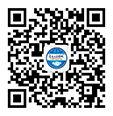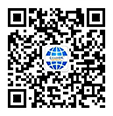Effects of disrupting conditions on extracting astaxanthin from Phaffia rhodozyma by DMSO method
-
摘要: 为了评价二甲亚砜(DMSO)法破壁在法夫酵母虾青素提取中的应用价值,研究了提取溶剂、DMSO用量、破壁温度、料液比、浸提时间、浸提次数6个条件因子对破壁后法夫酵母虾青素提取的影响,并对破壁条件进行了优化。实验结果表明:丙酮为最理想的提取溶剂;各主要因素破壁温度、料液比和浸提时间对虾青素的提取量影响依次减小,单因素及正交实验得到法夫酵母中虾青素提取的最佳条件为:以丙酮为提取溶剂、DMSO用量1∶1.5、浸提2次、破壁温度45℃、料液比1∶20(w/v)、浸提时间40 min,优化后虾青素的提取量为4.42 mg/g。Abstract: In order to evaluate the possibility of extracting astaxanthin from Phaffia rhodozyma disrupted cell wall by DMSO method, influences of several factors such as type of solvent, dosage of DMSO, temperature, the ratio of solid to liquid, extraction time and extracting times on recovery of astaxanthin from Phaffia rhodozyma were studied and conditions for disrupting the yeast cell wall were optimized. Results showed that acetone was the optimal solvent for extracting astaxanthin. The effect significance of extraction temperature, the ratio of solid to liquid and extraction time were gradually decreased on recovery of astaxanthin.The optimal conditions obtained from single factor and orthogonal experiment were as follows: acetone as the extracting solvent, 1∶ 1.5 dosage of DMSO, 2 times of extraction, 45 ℃ of extraction temperature, 1 ∶ 20 of the ratio of solid to liquid and 40 min of extraction time. Under the optimal conditions, the astaxanthin recovery from Phaffia rhodozyma was4.42 mg/g.
-
Keywords:
- Phaffia rhodozyma /
- astaxanthin /
- DMSO /
- orthogonal experiment /
- extraction
-
[1] Nishigaki I, Rajendran R, Venugopal G, et al.Cytoprotectiverole of astaxanthin against glycated protein/iron chelate-induced toxicity in human umbilical vein endothelial cells[J].Phytother Res, 2010, 24:54-59.
[2] 姜启兴, 夏文水.龙虾壳中色素的稳定性研究[J].食品科学, 2006, 27 (7) :61-64. [3] 高清潭, 崔志强.虾青素的应用及其商业化生产[J].海湖盐与化工, 2004, 33 (6) :33-37. [4] 汪洪涛.虾青素的性质与开发[J].粮食与油脂, 2006 (11) :40-43. [5] 朱明军, 宗敏华, 吴振强, 等.虾青素研究进展[J].食品工业科技, 2000, 21 (2) :79-81. [6] Johnsone A.Astaxanthin from microbial sources[J].Critical Reviews in Biotechnology, 1991, 11 (4) :297-326.
[7] Ho L P, Tam C Y, Zhou B.Growth and carotenoid production of Phaffia rhodozyma in fed-batch culture swith different feeding methods[J].Biotechnology Letters, 1999, 21:175-178.
[8] Okagbue R N, Lewis M J.Autolysis of the red yeast Phaffia rhodozyma:a potential tool to facilitate extraction of astaxanthin[J].Biotechnology Letters, 1984 (6) :247-250.
[9] Okagbue R N, Lewis M J.Mixed culture of Bacillus circulans WL-12 and Phaffia rhodozyma on different carbon sources:Yeast-wall lytic enzyme production and extractability of astaxanthin[J].Biotechnology Letters, 1983, 5:731-736.
[10] 周锦珂, 李金华, 葛发欢, 等.酶法提取雨生红球藻中虾青素的新工艺研究[J].中药材, 2008, 31 (9) :1423-1425. [11] 陈喜军.一种酶法提取雨生红球藻中虾青素的新工艺.中国:CN104529851A[P].2015-4-22. [12] Wu W, Lu M, Yu L.A New Environmentally Friendly Method for Astaxanthin Extraction from Xanthophyllomyces Dendrorhous[J].European Food Research and Technology, 2011, 232 (3) :463-467.
[13] Ni H, Chen Q, He G, et al.Optimization of Acidic Extraction of Astaxanthinfrom Phaffia Rhodozyma[J].Journal of Zhejiang University Science B, 2008, 9 (1) :51-59.
[14] 姬聪颖.法夫酵母JMU-MVP14类胡萝卜素的分析、制备与微胶囊化研究[D].厦门:集美大学, 2013. [15] 武一琛, 杨慧茹, 方园, 等.天然虾青素提取及分离纯化研究进展[J].食品研究与开发, 2014, 35 (12) :117-119. [16] 倪辉, 何国庆, 杨远帆, 等.法夫酵母虾青素提取工艺的优化研究[J].农业工程学报, 2004, 20 (2) :204-208. [17] Sedmak J J, Weerasinghe D K, JOLLY S O.Extraction and quantitation of astaxanthin from Phaffia rhodozyma[J].Biotechnol Tech, 1990, 4:107-112.
[18] 张琇, 李娜, 曹晓虹, 等.红酵母虾青素提取工艺的优化[J].食品科技, 2011, 36 (1) :196-199. [19] 张影霞, 武利刚, 罗志辉, 等.虾青素的提取及其稳定性的研究[J].现代食品科技, 2008, 24 (12) :1288-1291. [20] Smondyrev A M, Berkowitz M L.Molecular dynamics simulation of DPPC bilayer in DMSO[J].Biophysical journal, 1999, 76 (5) :2472-2478.
[21] 倪辉, 何国庆, 吴光斌, 等.酸法破壁条件对法夫酵母虾青素效果的影响[J].农业工程学报, 2005, 21 (3) :176-180.
计量
- 文章访问数:
- HTML全文浏览量:
- PDF下载量:





 下载:
下载:



